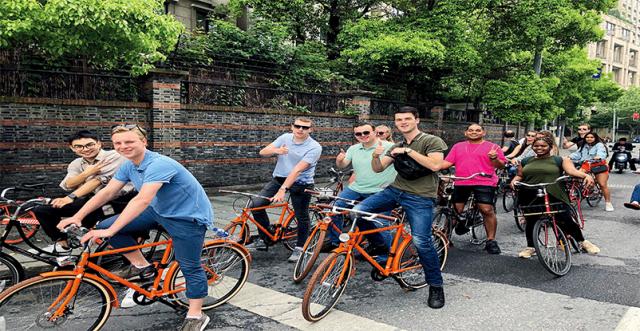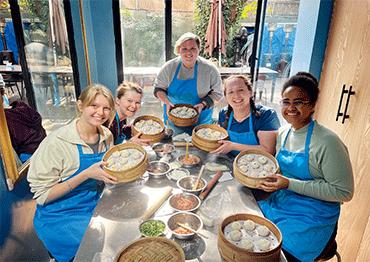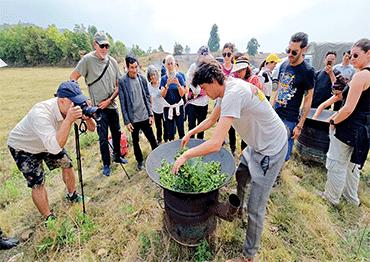Beijinger Liu Lei gambled on opening a hotpot restaurant in Shichahai, a touristy area of the old city of Beijing famous for lakeside bars and eateries. His restaurant is inside the quaint Huixiantang Hall, a private mansion that belonged to a high-ranking official of the Qing Dynasty (1644-1911).
Business was so poor that at first, he doubted he would survive. To his surprise, at the beginning of March he saw a surge in foreign clientele, many of whom were overseas students. He found they came from countries like Germany, France and Spain, often with friends or relatives who were visiting them.
Getting into China is much easier since passport-holders of 15 countries have been allowed to enter visa-free for periods of 15 days for business, tourism and visiting relatives and friends, including Australia, New Zealand, Poland, Hungary and Ireland. There are also reciprocal visa arrangements with another seven nations, including Singapore and Thailand, which allows stays of up to 30 days.
By July 15, 2024, China expanded its 72 or 144-hour visa-free policy to 37 entry ports for foreign nationals from 54 countries including the US, Canada and the UK, which allows layovers between flights to a third country or region, restricted to the region the flights land in.
“I never thought I’d get so many foreign guests, we get a few groups every day,” Liu said.
Peng Ran, who has run a bar for eight years not far from Liu’s restaurant, feels differently. “There were far more overseas tourists in the past. This year saw a slight recovery, but you still can’t compare it to the good old days,” Peng told NewsChina.
The bar owner argued that to reboot inbound tourism, issuing more visa-free policies is far from enough – retaining tourists and encouraging them to spend more is crucial.
According to the China Tourism Academy, in Q1 2024, the numbers of overseas visitors received by China’s top four cities – Beijing, Shanghai, Guangzhou and Shenzhen – have already exceeded every quarter of 2023. But the statistics are incomparable to those in the same period of 2019, respectively accounting for 67.2 percent (Beijing), 64 percent (Shanghai), 53.2 percent (Guangzhou) and 83 percent (Shenzhen). The latter benefits due to its proximity to China’s Hong Kong SAR.
However, there was still not much tourism in 2023, as China continued to recover from the impact of the pandemic, and international flights only started ramping up from the summer.
Eastern China’s Yangtze River Delta Region, mainly covering Shanghai and provinces of Zhejiang, Jiangsu and Anhui, is popular with overseas tourists. Statistics from leading tourism platform Trip.com show that in the first quarter of 2024, bookings for inbound tourism in this region rose 350 percent compared with the year earlier.
Li Xinfang is deputy director-general of the Zhejiang Provincial Department of Culture, Radio, Television and Tourism. She told NewsChina that instead of merely visiting regular attractions, global tourists have developed a stronger interest in experiencing authentic Chinese culture and lifestyles.
“Many foreign visitors now like visiting popular food markets in Hangzhou, Ningbo and Quzhou, or going to the ancient towns of Hangzhou to have an authentic breakfast like a real local,” Li told NewsChina.
In Hangzhou, the ancient capital of the Southern Song Dynasty (1127- 1279), popular activities for foreign tourists include learning about Chinese traditional instruments and costumes, flower arranging and the rituals of the Chinese tea ceremony.
Another conspicuous change lies in the mode of traveling, Li said. Besides traditional group tours arranged by overseas tour operators, more international tourists prefer independent travel or small group short tours.
“We’ve particularly found that international content creators and influencers on YouTube and TikTok are influential among China’s inbound tourists. Their vlogs about traveling in China have increasingly affected overseas people’s understanding about China, and influenced their ways of traveling and consuming,” Li said.

 Old Version
Old Version




